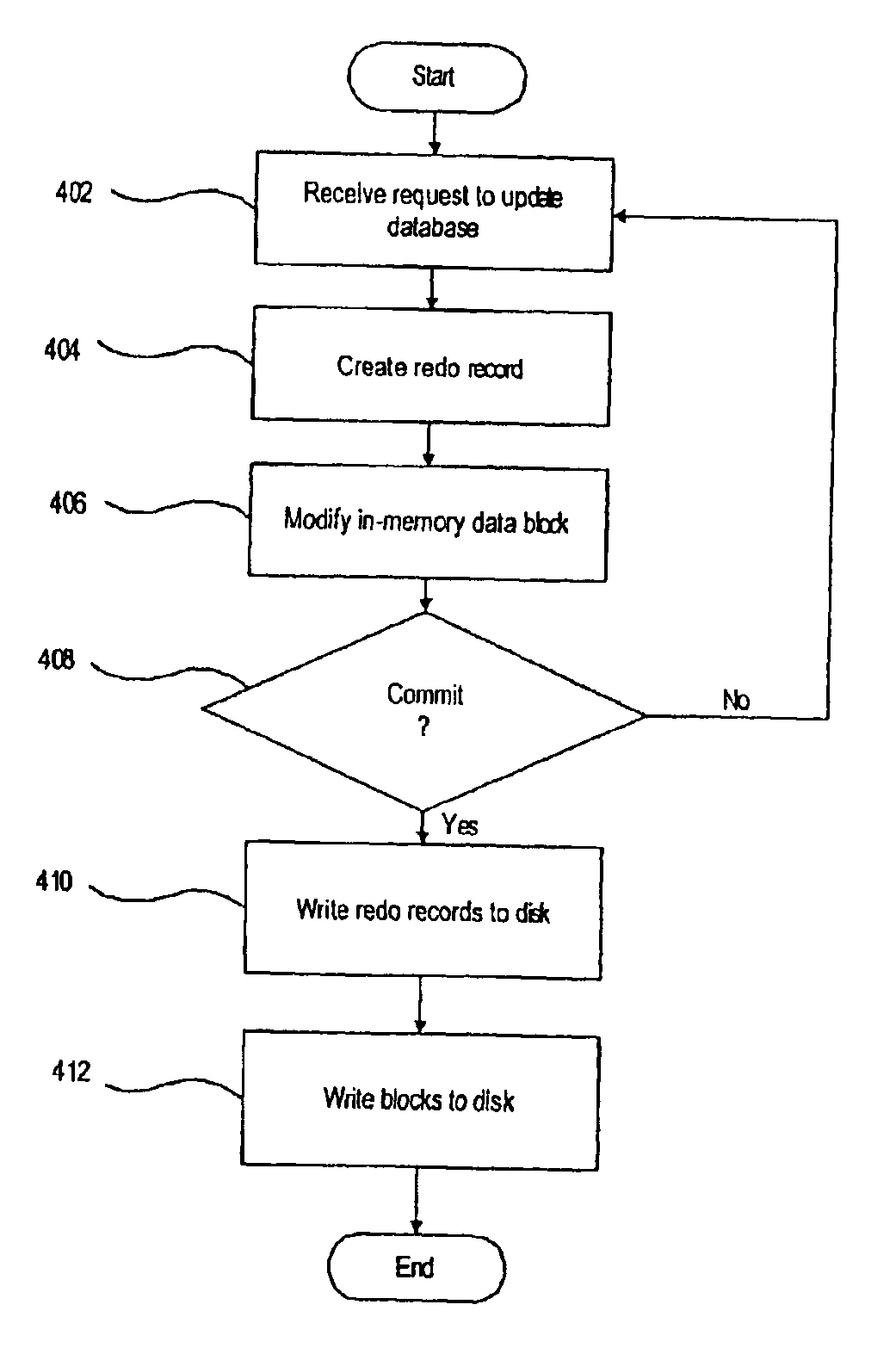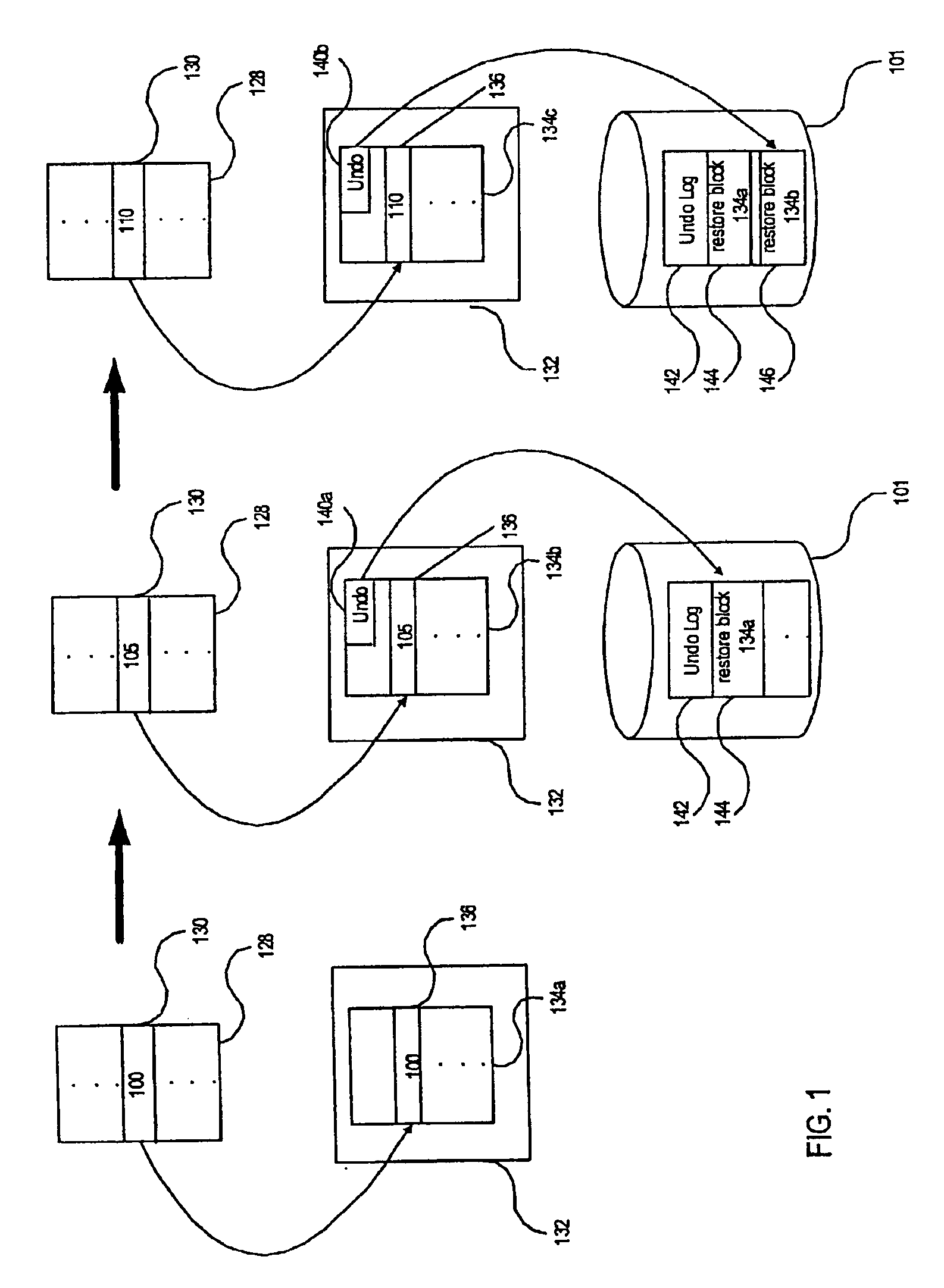Method and mechanism for batch processing transaction logging records
a transaction and record logging technology, applied in the field of computer systems, can solve problems such as hardware failure, system failure or aborting of entire transaction, and inability to complete the entire transaction
- Summary
- Abstract
- Description
- Claims
- Application Information
AI Technical Summary
Benefits of technology
Problems solved by technology
Method used
Image
Examples
Embodiment Construction
[0015]The present invention provides a method and mechanism for implementing transaction logs in a database system. For the purpose of explanation, throughout this document the term “disk” or “disk system” is used to refer to data storage systems, but the inventive concepts disclosed herein may also be applied to other types of storage systems besides disk-based systems. In addition, the following description will be made with respect to the storage / retrieval of relational data from a database. It is noted, however, that the present invention is applicable to managing other types and granularities of data in a computing system, and thus is not to be limited to compression of just relational data.
[0016]In many database systems, logical space is allocated to store data in a database. The logical space can be mapped onto physical disks or other storage systems. A common unit of allocation is the database block, which is the finest level of granularity for allocating and accessing data ...
PUM
 Login to View More
Login to View More Abstract
Description
Claims
Application Information
 Login to View More
Login to View More - R&D
- Intellectual Property
- Life Sciences
- Materials
- Tech Scout
- Unparalleled Data Quality
- Higher Quality Content
- 60% Fewer Hallucinations
Browse by: Latest US Patents, China's latest patents, Technical Efficacy Thesaurus, Application Domain, Technology Topic, Popular Technical Reports.
© 2025 PatSnap. All rights reserved.Legal|Privacy policy|Modern Slavery Act Transparency Statement|Sitemap|About US| Contact US: help@patsnap.com



